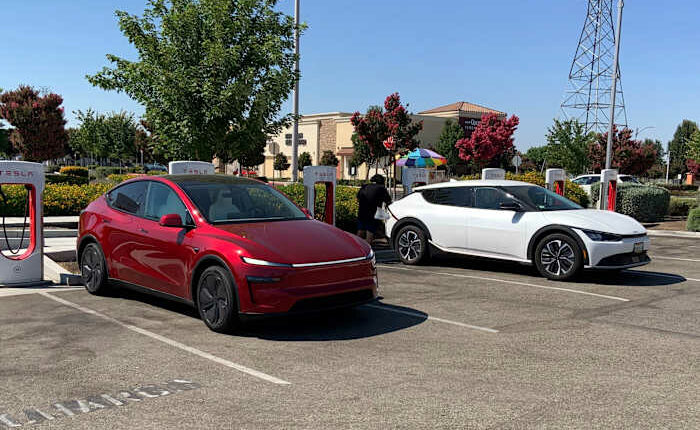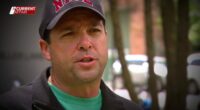Share this @internewscast.com

The thought of embarking on a cross-country road trip in an electric vehicle can be intimidating. It’s easy to imagine scenarios where you might end up stranded with a drained battery or facing long waits at charging stations. However, these challenges can be managed with some planning. The experts at Edmunds, with their extensive experience in driving electric vehicles, offer five essential tips to make cross-country EV travel simple and enjoyable.
Use EV route planning applications
Reducing the number of charging stops and the time spent at each is crucial for an efficient EV road trip. Utilizing a route planning app can be particularly helpful. Such apps guide you on the optimal charging stops and times required to reach your destination seamlessly.
Most modern EVs come equipped with a built-in navigation system that includes route planning functionalities. By entering your destination, the system can automatically map out necessary charging stops along the way. From our experience, Tesla vehicles offer top-notch route planning capabilities. EVs equipped with Google Maps, like many new General Motors models including the Chevrolet Equinox EV, provide similar functionality.
Alternatively, you can use an EV route planning smartphone app such as A Better Route Planner (ABRP) or PlugShare. We prefer ABRP because it’s available as an app or through an internet browser. It also shows more details at each stop, like the expected battery percentage. When using a route planner, stick to Level 3 fast charging stations when driving. Slower Level 2 stations will take hours but are ideal for overnight charging.
Use Tesla charging stations
The Tesla Supercharger network of fast charging stations is the largest in the country. We recommend using them on a cross-country trip because they are usually very reliable and have more charging stalls per location than most networks. Teslas have access to them and certain non-Tesla EVs are also eligible to use them, but most non-Tesla EVs need an adapter to charge at a Tesla Supercharger. Check with your local service center or search online to determine if your EV is compatible. If you have a non-Tesla EV that has access, change the settings in your route planner to include Tesla stations.
If your EV cannot charge at Tesla stations, you’ll need to utilize other third-party charging station networks. Some of the largest networks include Electrify America, EVgo and ChargePoint.
Have a backup plan, and leave a range cushion
When planning a route that does not use Tesla Superchargers, it’s best to have a backup charging station for each stop. Charging stations can sometimes be out of order, and in some cases, like during a holiday or on busy highways, there could be long lines. To find the status of a specific charging station, download the app of the company the station belongs to. Make sure to leave yourself enough range to make it to your backup station as well.
Stay in hotels with on-site charging stations
Staying at hotels with on-site charging stations can save time and money. Hotel charging stations are typically Level 2 stations that can fully charge your battery overnight, allowing you to start your trip immediately instead of charging before you hit the highway. They are usually more affordable than fast charging stations, and in some cases, are free. One way to find hotels with charging stations is by using the PlugShare app. This app contains a database of charging stations, and you can filter it to show stations connected with lodging locations.
Use charging stations that have amenities
It’s fair to expect that each charging stop you make in your EV will take 20-45 minutes. To make the most of that time, charge at stations with a convenience store, retail store or restaurant nearby. That way, you can use the bathroom, grab some stacks or even get a full meal while your vehicle is charging. Many charging stations are located near stores or restaurants, but not all. You can use Google Maps or similar smartphone apps to find out what’s within walking distance of the charging stations you plan on using. You can change the stations your route planner recommends as long as they aren’t too far away.
Edmunds says
Planning a cross-country trip in an EV takes extra effort, but doing it properly can make the journey nearly as smooth as in a gas-powered car. Give yourself access to as many fast charging stations as possible by choosing an EV that’s capable of using Tesla Supercharger stations.
____
This story was provided to The Associated Press by the automotive website Edmunds.
Michael Cantu is a contributor at Edmunds.
Copyright 2025 The Associated Press. All rights reserved. This material may not be published, broadcast, rewritten or redistributed without permission.















